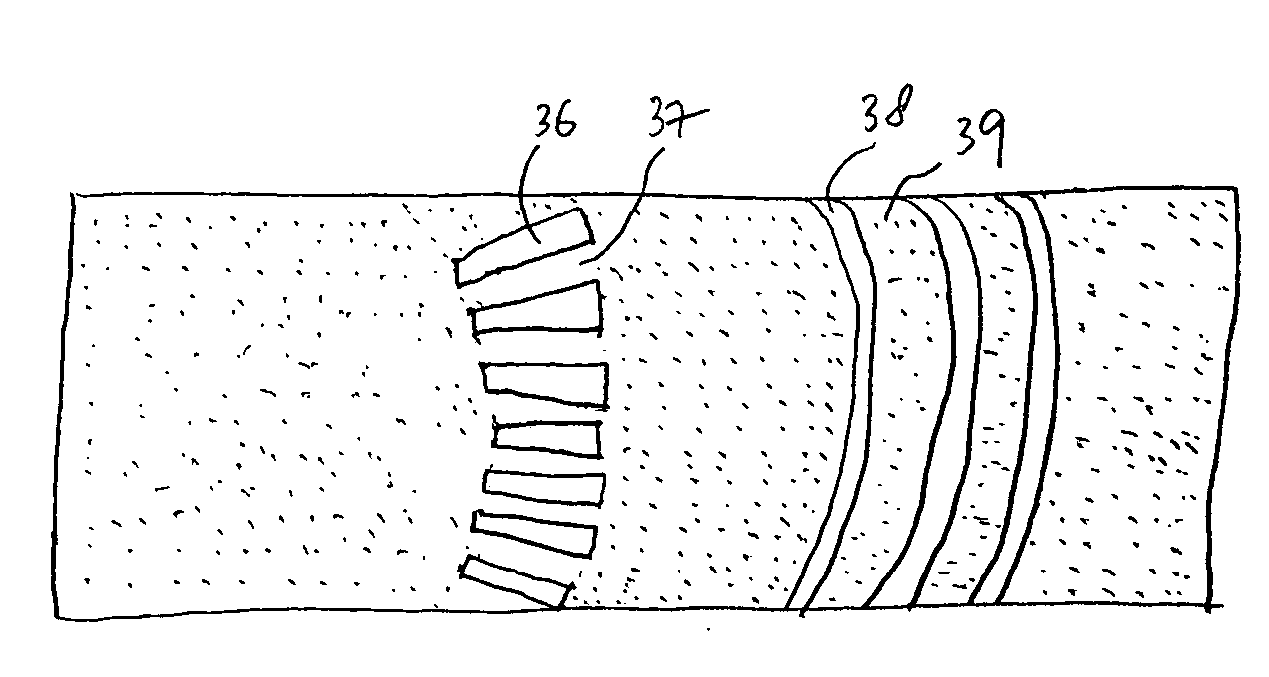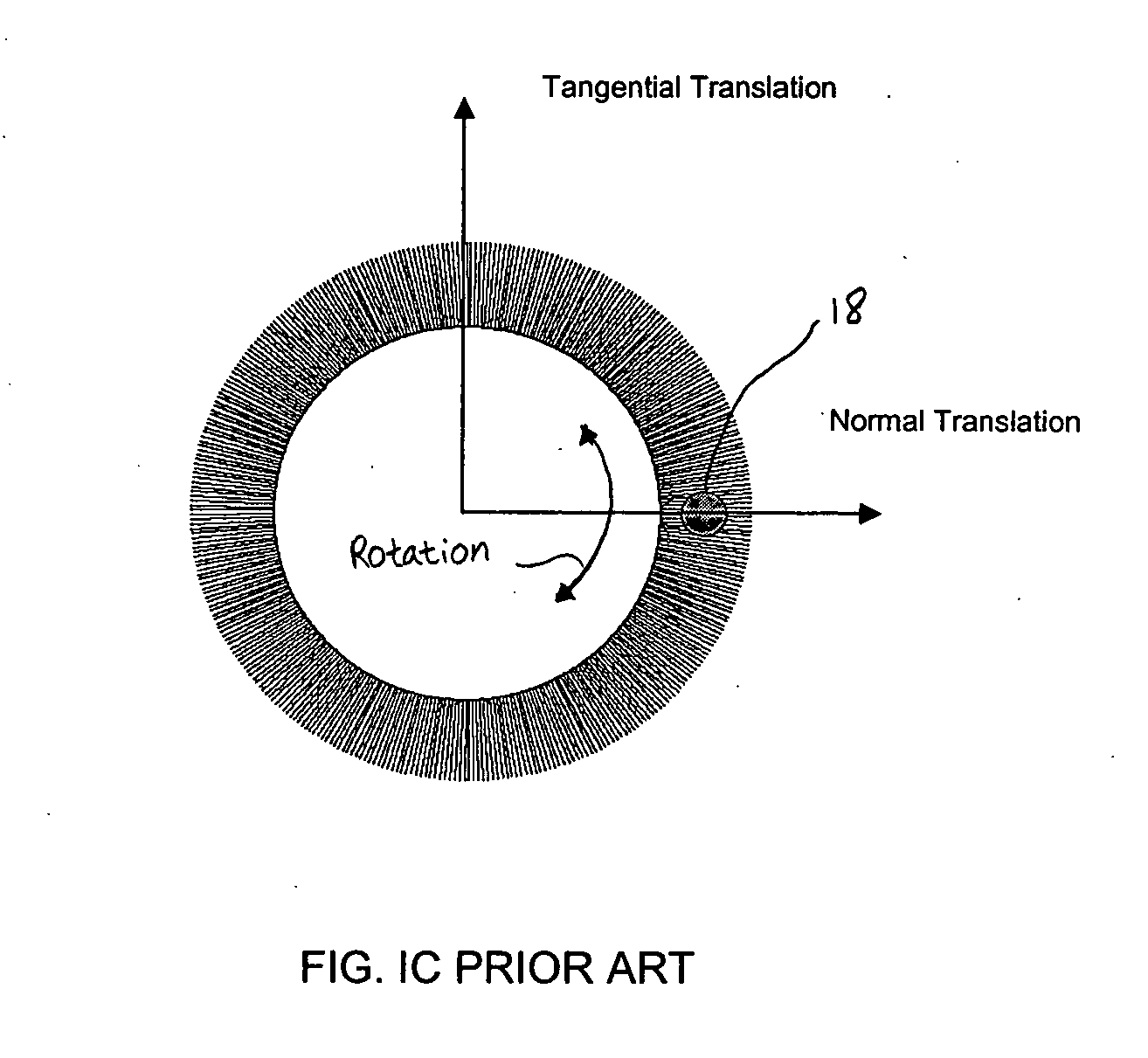Encoder for a motor controller
- Summary
- Abstract
- Description
- Claims
- Application Information
AI Technical Summary
Benefits of technology
Problems solved by technology
Method used
Image
Examples
Embodiment Construction
[0020] As discussed briefly above, while normal translation of the disk does not affect the light pattern generated by the radial lines of the disk and thus does not corrupt the rotational position information of the encoder as sensed by the radial lines, tangential translation of the disk will corrupt the sensed rotational position information of the encoder.
[0021] A conventional approach to this problem would be using an additional sensor located on the radius of the circular line pattern at an angle 900 from the radial line sensor. In this manner, tangential translation of the disk may be sensed and directly deducted from the positional information sensed from the radial lines. However, using an additional sensor in an encoder is disadvantageous for several reasons including increased cost and size of the motor system.
[0022] One aspect of the encoder of the present invention is using a single integrated sensor that measures both the approximate rotation (i.e., the sum of rotati...
PUM
 Login to View More
Login to View More Abstract
Description
Claims
Application Information
 Login to View More
Login to View More - R&D
- Intellectual Property
- Life Sciences
- Materials
- Tech Scout
- Unparalleled Data Quality
- Higher Quality Content
- 60% Fewer Hallucinations
Browse by: Latest US Patents, China's latest patents, Technical Efficacy Thesaurus, Application Domain, Technology Topic, Popular Technical Reports.
© 2025 PatSnap. All rights reserved.Legal|Privacy policy|Modern Slavery Act Transparency Statement|Sitemap|About US| Contact US: help@patsnap.com



